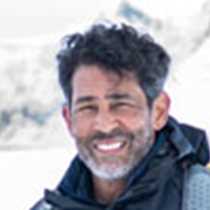Pearl Islands & the Gulf of Panama
Today after our successful crossing through the Panama Canal, we awoke in the Pearl Islands. Apparently, after discovering the archipelago, Spaniard conquistador Vasco Nunez de Balboa named it the Pearl Islands in 1513, due to the many pearls that were harvested from the area. Sadly it took the Spanish only two years to wipe out the native population and the pearls! The most renowned pearl found in the islands is without a doubt the famous 31-carat, 400-year-old Peregrine, today owned by Elizabeth Taylor; a present from Richard Burton.
This morning we ventured very early into the Pacheca and Pachequita Islands to look at the very abundant bird life. All these birds take advantage of the rich upwelling created by the prevailing winds that easily make it across the narrow Isthmus of Panama. These winds push the surface warm waters away; this creates a circular motion that brings up the deep cold waters rich with nutrients. The islands are a safe haven for all their regular residents: brown pelicans, brown boobies, blue-footed boobies, neotropical cormorants, magnificent frigate birds, yellow crowned night herons, black and turkey vultures, snowy egrets, great egrets, laughing gulls, yellow crested caracaras, and spotted sandpipers; and also for their not-so-common visitors: peregrine falcons, ospreys, zone-tailed hawks, American oystercatchers, wandering tattlers, etc.
We were quite surprised to see on the island a large, deep forest turkey-like bird, a great curassow, most likely a domesticated bird that somehow had escaped and made it to the island, it apparently was looking for human company and food.
After all this abundant bird watching activity full of great photographic opportunities, we repositioned to the nearby tiny Bartolome Island to relax on its white-sand beach and cool waters. Afterwards, off we went to our next island. And quite the island; Coiba is the biggest island on the Pacific coast of Central America.




